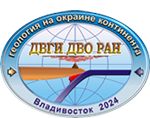Phanerozoic Evolution of Continental Large Igneous Provinces: Implications for Galactic Seasonality
Число скачиваний: 358
Nechaev et al., 2022-LIPs Minerals.pdf
Phanerozoic Evolution of Continental Large Igneous Provinces: Implications for Galactic Seasonality
Victor P. Nechaev, Frederick L. Sutherland and Eugenia V. Nechaeva
https://doi.org/10.3390/min12091150
Abstract: This study reviews the available data on the Phanerozoic plume activity (Large Igneous Provinces (LIP’s) size and frequency) and geochemistry of their igneous rocks. A major goal of this review is to try to find the changes in intensity and geochemistry of mantle plumes linked to the Earth’s evolution and galactic seasonality that was supposed in the authors’ previous publications.
The data indicate that the Cambrian–Ordovician and Jurassic–Cretaceous galactic summers were associated with peaks of various igneous activities including both plume- and subduction/collisionrelated magmatism, while the Carboniferous–Permian and current galactic winters led to significant drops within the igneous activity. The materials subducted into the transitional and lower mantle,
which highly influenced the plume magmas in the galactic-summer times, were less significant in the galactic spring and autumn seasons. The least subduction-influenced LIPs were probably the Tarim and Emeishan deep plume magmas that developed in the mid–late Permian, during the galactic late winter–early spring subseason. The Fe enrichment of clinopyroxenite, gabbro, and
associated ores of these provinces might be caused by fluids ascending from the core–mantle boundary. However, the most significant core influence through plume-associated fluids on the surface of solid Earth is supposed to have occurred in the galactic summer times (Cambrian–Ordovician and Jurassic–Cretaceous), which is indicated by peak abundances of ironstone ores. Their contributions to the Cambrian–Ordovician and Jurassic–Cretaceous plume magmas were, however, obscured by more significant influences from subduction.







